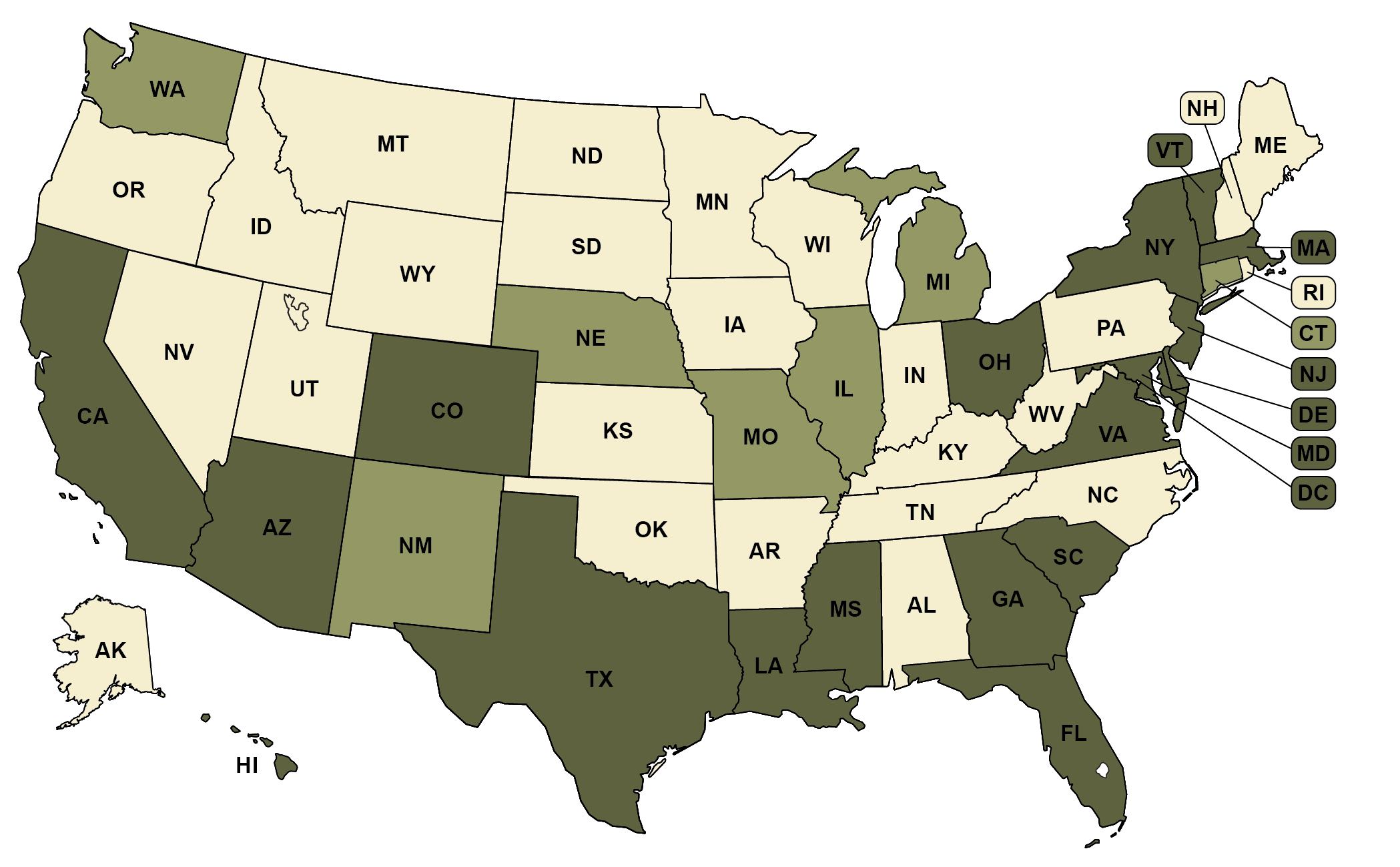Guns at polling places, even if not used to commit violence, can be used to intimidate voters and election officials, as evidenced by our country’s long and fraught history of political violence, often targeted at Black voters and other historically disenfranchised groups. Combined with the marked rise in threats to election officials and violent rhetoric around elections, the proliferation of firearms in our country represents an increasing danger for everyone participating in the voting process. There is currently no federal law prohibiting the possession of firearms in polling places, and therefore these policy decisions are left to the states. Our map distinguishes between states with total prohibitions on guns in polling places, and states with partial bans. Partial bans have exceptions for either open or concealed carry of firearms.

-
State has a total prohibition against guns in polling places
(16 states + D.C.)
-
State has a partial prohibition on guns in polling places
(9 states)
-
State has no clear prohibition against guns in polling places
(25 states)
Recommended citation: Movement Advancement Project. "Bans on Guns in Polling Places." https://www.mapresearch.org/democracy-maps/guns_in_polling_places. Accessed [day of access]
Breakdown by Population
*Note: These percentages reflect the voting-eligible population, as reported by the United States Election Project.
57 % of voting-eligible population lives in states that have a total prohibition on guns in polling places
14 % of voting-eligible population lives in states that have a partial prohibition on guns in polling places
29 % of voting-eligible population lives in states that have no clear prohibition against guns in polling places


